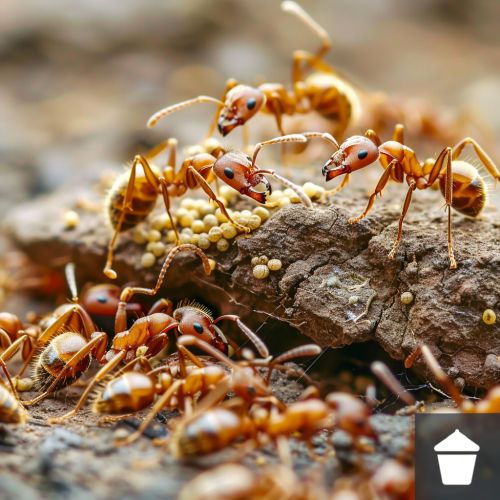Ant colony optimization algorithms
Introduction
Ant colony optimization (ACO) are a set of computational intelligence techniques inspired by the behavior of real ant colonies. These algorithms are used to solve discrete optimization problems, such as the travelling salesman problem, vehicle routing problem, and quadratic assignment problem. ACO algorithms are part of the larger field of swarm intelligence, which studies collective behaviors in decentralized systems.


Theoretical Background
ACO algorithms are based on the concept of stigmergy, a form of indirect communication through the environment. In nature, ants deposit a chemical substance called pheromone on their paths, which influences the behavior of other ants. This pheromone trail is a form of positive feedback: the more ants follow a path, the stronger the pheromone trail becomes, attracting more ants to that path. This behavior allows ant colonies to find the shortest paths between their nest and food sources.
Algorithm Description
The basic ACO algorithm works as follows:
- A set of artificial ants is placed on the nodes of a graph representing the problem to be solved.
- Each ant builds a solution to the problem by moving from node to node along the edges of the graph.
- The decision to move from one node to another is made stochastically, based on the amount of pheromone on the edges and a heuristic information related to the problem.
- Once all ants have built their solutions, they deposit a quantity of pheromone on the edges they traversed, with the amount of pheromone being inversely proportional to the quality of the solution.
- The pheromone on the edges evaporates over time, which is a form of negative feedback.
This process is repeated until a termination condition is met, such as a maximum number of iterations or a satisfactory solution has been found.
Variants of ACO Algorithms
There are several variants of the basic ACO algorithm, each with its own characteristics and suitable for different types of problems. These include:
- Ant System (AS): This is the original ACO algorithm, proposed by Marco Dorigo in his Ph.D. thesis in 1992.
- Ant Colony System (ACS): This variant introduces a local pheromone update rule, which accelerates the convergence of the algorithm.
- Max-Min Ant System (MMAS): This variant introduces a maximum and minimum limit for the pheromone trail, preventing the algorithm from converging too quickly to a suboptimal solution.
- Rank-Based Ant System (RAS): In this variant, only the best solutions contribute to the pheromone update, which reduces the influence of poor solutions.
- Continuous Ant Colony Optimization (CACO): This variant extends the ACO framework to continuous optimization problems.
Applications
ACO algorithms have been successfully applied to a wide range of optimization problems, including:
- Routing in telecommunication networks: ACO algorithms can be used to find the shortest paths for data packets in a network.
- Vehicle routing: ACO algorithms can be used to determine the optimal routes for a fleet of vehicles delivering goods to a set of customers.
- Scheduling: ACO algorithms can be used to schedule tasks in a manufacturing process or in a computer system.
- Protein folding: ACO algorithms can be used to predict the three-dimensional structure of a protein based on its amino acid sequence.
See Also
Swarm Intelligence Particle Swarm Optimization Genetic Algorithms Evolutionary Computation Metaheuristic
